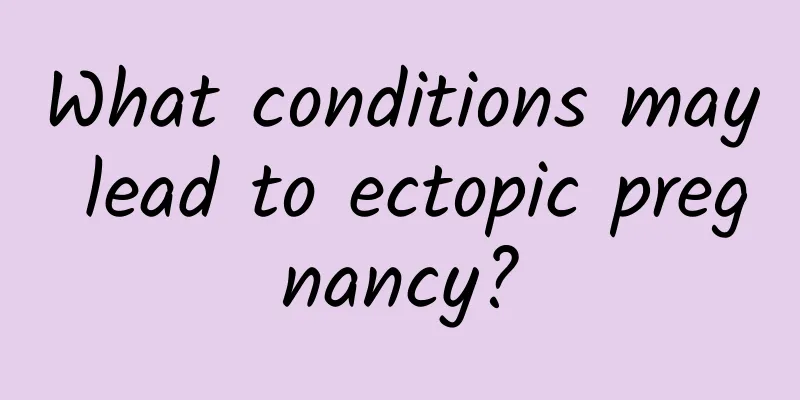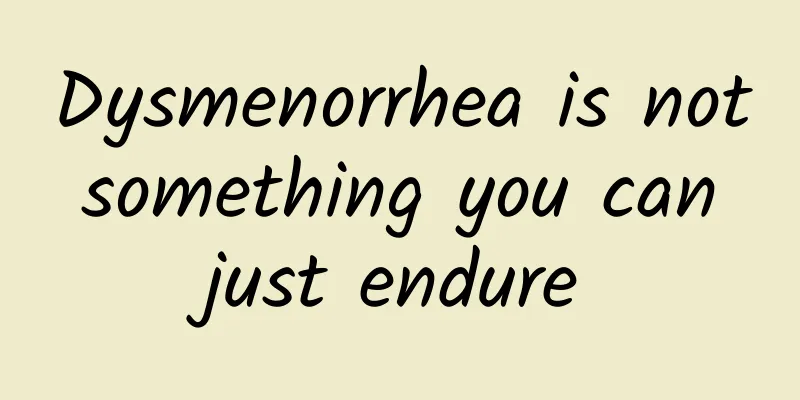What are the symptoms of ovarian cysts in women

|
Ovarian cysts are the most common and frequent disease in women. They are a type of benign ovarian disease with a relatively complex etiology. So, what are the symptoms of ovarian cysts in women? Let's learn about them together. 1. Discomfort in the lower abdomen: This is the initial symptom before the patient feels a lower abdominal mass. Due to the weight of the tumor itself and the influence of intestinal peristalsis and changes in body position, the tumor moves in the pelvic cavity, pulling on its pedicle and pelvic funnel ligament, causing the patient to feel distension and falling in the lower abdomen or iliac fossa. 2. Increased abdominal circumference and abdominal mass: The patient notices that his clothes or belt seem too tight, and then notices the enlargement of the abdomen, or feels it by chance in the morning, so he presses his abdomen and finds a mass in the abdomen, plus abdominal distension and discomfort. This is one of the symptoms of female ovarian cysts. 3. Abdominal pain: If the tumor has no complications, there is very little pain. Therefore, if patients with ovarian tumors feel abdominal pain, especially if it occurs suddenly, it is mostly caused by the twisting of the tumor pedicle, or occasionally by tumor rupture, bleeding or infection. In addition, malignant cysts often cause abdominal pain and leg pain, and the pain often causes patients to seek emergency treatment. 4. Menstrual disorders: Some uterine bleeding is not endocrine, or it is caused by ovarian tumors that change the distribution of pelvic blood vessels, causing endometrial congestion; or it is caused by ovarian malignant tumors directly metastasizing to the endometrium. Menstrual disorders caused by endocrine tumors are often combined with other secretory effects. This is also one of the symptoms of female ovarian cysts. 5. Compression symptoms: A huge benign ovarian cyst fills the entire abdominal cavity, increasing the intra-abdominal pressure and affecting the venous return of the lower limbs, which can lead to edema of the abdominal wall and both lower limbs; while a malignant ovarian cyst fixed in the pelvic cavity compresses the iliac vein, often causing edema of one lower limb. The pelvic and abdominal organs are compressed, resulting in dysuria, urinary retention, urgency or difficulty in defecation. The above content introduces the symptoms of female ovarian cysts in detail, and I hope it will be helpful to everyone. If you find the above symptoms, you should go to the relevant hospital for examination and treatment immediately. Special topic on ovarian cysts: http://www..com.cn/fuke/ncnn/ |
<<: Common knowledge about ovarian cysts in adolescence
>>: How to prevent ovarian cysts in women
Recommend
What are the causes of irregular menstruation? These 4 causes can lead to irregular menstruation
Causes of irregular menstruation Some women have ...
What are the preventive measures for cervical precancerous lesions?
How to prevent cervical precancerous lesions at a...
Should I choose partial or full anesthesia for abortion? This article will tell you
Abortion surgery, whether it is partial anesthesi...
Is Air Force breakfast bad? Nutritionist: The blacklist of obesity landmines is…
According to media reports, a volunteer air force...
Which hospital should I go to for diagnosis of hyperprolactinemia?
Core Tip: When a patient becomes ill, he or she w...
Common clinical symptoms of uterine fibroids
Many people experience some symptoms of uterine f...
What are the comprehensive treatments for chronic adnexitis?
What are the comprehensive treatments for chronic...
What should I do if I have dull pain in the left abdomen due to adnexitis? What medicine should I take?
Left abdominal pain caused by adnexitis can be re...
Fructooligosaccharides help you lose weight! Just eat bananas and onions
The weather is getting hotter and you are wearing...
What tests should be done for pelvic peritonitis
Regarding the examination methods of pelvic perit...
Causes of pelvic inflammatory disease
Among gynecological inflammations, pelvic inflamm...
Pay attention to the prevention of cervicitis to live a healthy life
Cervicitis is a very common disease among women. ...
Nori is a "vegetable in the sea" and is very nutritious! Supplementing iron and calcium to have a good complexion, "this" is more abundant
The black and purple seaweed is known as the &quo...
What to eat for less menstrual flow
What should I eat when my menstrual flow is light...
What are the signs of menopause at the age of 46?
Before menopause, most women experience irregular...









